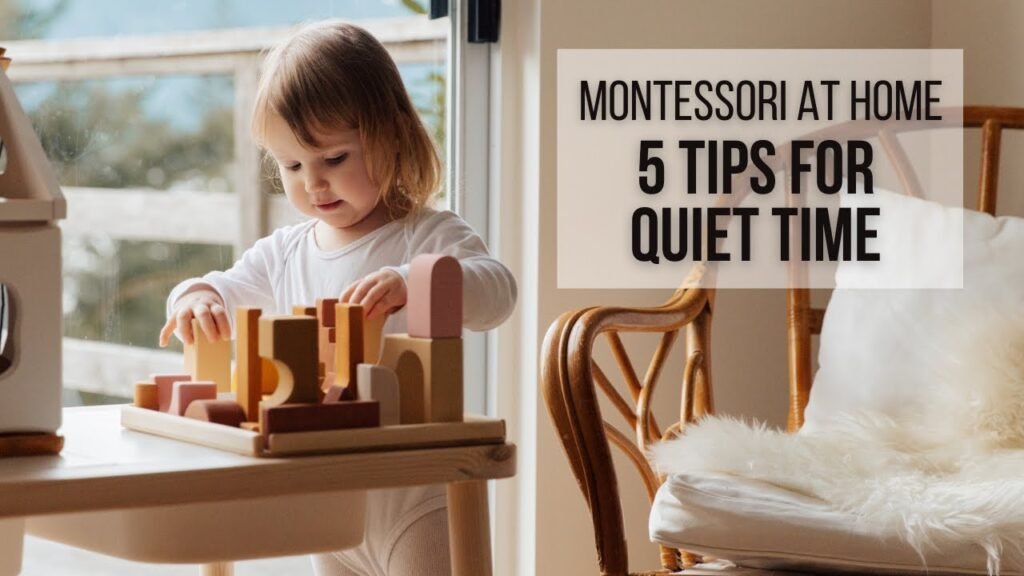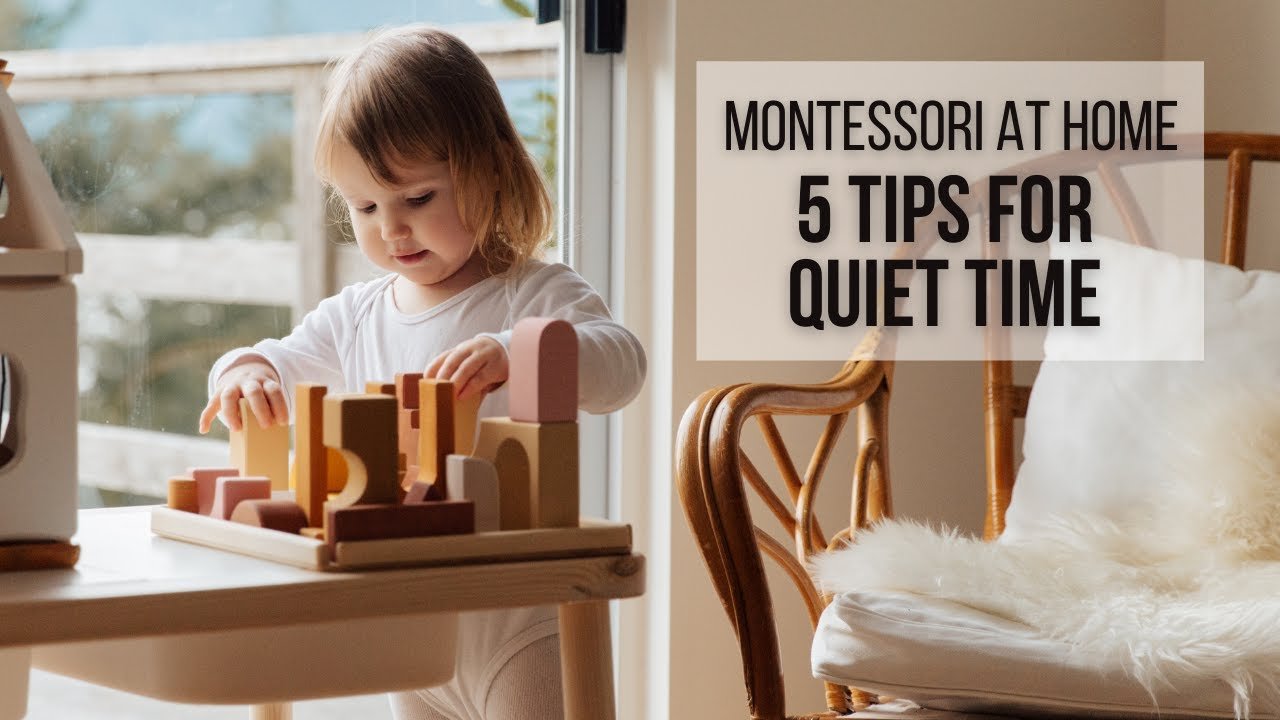In the video titled “MONTESSORI AT HOME: 5 Tips for Quiet Time” by Hapa Family, you’ll find valuable insights on implementing quiet time in a Montessori home. The video provides five helpful tips for creating a peaceful and independent environment for your child. From scheduling quiet time every day to setting a timer for a definitive start and end, you’ll discover practical strategies that can benefit your family. By encouraging quiet and independent activities, finding self-care during this time, and remaining available for your child, you can create a routine that fosters relaxation and personal growth. Whether you have one child or multiple children, the video offers bonus tips on how to handle disputes and foster problem-solving skills. By following these tips, you can improve your child’s daily routine and give both yourself and your child the much-needed rest and recharge time you deserve.
Tip 1: Schedule Quiet Time
Implementing a regular quiet time schedule
When it comes to implementing quiet time in your Montessori home, consistency is key. While it’s not necessary to schedule quiet time at an exact time every day, it is important to have a regular quiet time schedule. This means that your child knows when to expect quiet time and can mentally prepare for it. For example, you can schedule quiet time after lunch each day, or during a specific block of time in the afternoon. By having a set time for quiet time, you create a sense of routine and structure for your child.
Flexibility in choosing the time for quiet time
It’s important to remember that every family is different, and what works for one family may not work for another. While it’s helpful to have a regular quiet time schedule, it’s also important to be flexible. Life happens, and sometimes you may need to adjust the time for quiet time based on your family’s needs. The goal is to find a time that works best for your family and allows everyone to benefit from the quiet time.
Tip 2: Set a Timer
Using a timer to establish a clear start and end to quiet time
Setting a timer can be incredibly beneficial for both you and your child when it comes to quiet time. By using a timer, you establish a clear start and end to quiet time, which helps your child understand the expectations. The timer acts as a visual and auditory cue that lets your child know when quiet time begins and ends. This eliminates any confusion and helps your child feel more in control of their own time.
Helping children understand the concept of time
For young children, understanding the concept of time can be challenging. Using a timer during quiet time can help them develop a sense of time and learn how to manage their own activities. You can explain to your child that when the timer goes off, quiet time is over and they can resume their regular activities. As they become more familiar with the routine, they will begin to gauge their own time and may not rely on the timer as much.

Tip 3: Encourage Independent Activities
Selecting open-ended materials for play
During quiet time, it’s important to encourage independent activities that allow your child to explore their interests and exercise their creativity. Open-ended materials, such as blocks, art supplies, or sensory bins, can provide endless opportunities for imaginative play. These materials allow your child to engage in self-directed play and explore their own ideas without strict guidelines or rules.
Promoting creativity and imagination
Quiet time is the perfect opportunity for your child to tap into their imagination and unleash their creativity. Encourage them to create their own stories, build unique structures, or engage in pretend play. By providing open-ended materials and giving your child the freedom to explore, you are fostering their creativity and helping them develop their own unique ideas and creations.
Encouraging reading during quiet time
Reading is a fantastic quiet time activity that not only promotes literacy but also encourages focus and concentration. Set aside a designated area for reading during quiet time, filled with a variety of age-appropriate books. Encourage your child to choose books that interest them and allow them to explore different genres and topics. Reading during quiet time can be a calming and relaxing activity for your child, helping them to unwind and escape into a world of imagination.
Tip 4: Prioritize Self-Care
Finding a personal quiet time activity
While quiet time is primarily focused on providing a break for your child, it’s important to prioritize self-care for yourself as well. Use this time to engage in an activity that brings you joy and relaxation. Whether it’s reading a book, taking a bath, practicing meditation, or even just enjoying a quiet cup of tea, find something that helps you recharge and rejuvenate. Taking care of yourself during quiet time allows you to be more present and attentive to your child’s needs once quiet time is over.
Taking care of oneself as a parent
Parenting can be demanding, and it’s crucial to prioritize self-care. Quiet time is the perfect opportunity for you to take care of your own well-being. Use this time to engage in activities that help you relax and restore your energy. Physical exercise, journaling, practicing a hobby, or simply having quiet time for yourself can have a positive impact on your overall well-being. By taking care of yourself, you are better able to care for your child and create a positive atmosphere during quiet time.
Promoting well-being and relaxation
Quiet time should be a time of relaxation and rejuvenation for both you and your child. By prioritizing self-care and promoting well-being, you create a peaceful environment that fosters relaxation and a sense of calm. This can have a positive impact on your child’s overall well-being and help them develop healthy habits of self-care as they grow.
Tip 5: Be Available and Present
Remaining accessible to the child during quiet time
Although quiet time is meant to be a time for independent play and relaxation, it’s important to remain accessible to your child. Let them know that you are available if they need assistance or guidance. By staying nearby, you can provide a sense of security and reassurance for your child. This is especially important for younger children who may need additional support during quiet time.
Providing support and guidance if needed
While quiet time is primarily a time for your child to play independently, there may be moments when they need your support or guidance. If your child is struggling with a particular activity or feeling frustrated, offer them assistance in a calm and patient manner. By providing the necessary support, you can help them overcome challenges and build confidence in their abilities.
Engaging in quiet activities together
Quiet time can also be an opportunity for you and your child to engage in quiet activities together. Whether it’s reading a book, doing a puzzle, or working on a quiet craft, participating in an activity together can strengthen your bond and create cherished memories. This also allows you to model the behavior you want to see from your child during quiet time and provides an opportunity for quality one-on-one time.
Bonus Tip: Managing Multiple Children
Allowing siblings to play together during quiet time
If you have multiple children, quiet time can be a challenge. One way to manage multiple children during quiet time is to allow siblings to play together. This can foster a sense of companionship and create a peaceful play environment. Encourage your children to engage in cooperative play and build shared activities that they can enjoy together.
Intervening when necessary
While it’s important to allow siblings to play together during quiet time, there may be moments when intervention is required. If disputes or conflicts arise, step in and help your children find a peaceful resolution. Teach them problem-solving skills and encourage them to communicate their needs and feelings effectively. By intervening when necessary, you can create a harmonious environment and ensure that everyone’s needs are met during quiet time.
Encouraging problem-solving skills
Quiet time is an excellent opportunity for your children to develop problem-solving skills. When conflicts arise, allow your children to work through the issue themselves before stepping in. Encourage them to communicate, compromise, and find solutions together. By fostering their problem-solving abilities, you are equipping them with essential life skills that will serve them well in the future.
Conclusion
Implementing quiet time in your Montessori home can bring a sense of peace and productivity to your daily routine. By following these tips, you can create a structured and enjoyable quiet time for both you and your child. Scheduling quiet time, setting a timer, encouraging independent activities, prioritizing self-care, being available and present, and managing multiple children can all contribute to a successful and fulfilling quiet time experience. Remember to be flexible, adapt to your family’s needs, and most importantly, enjoy the benefits of this valuable and restorative time.

